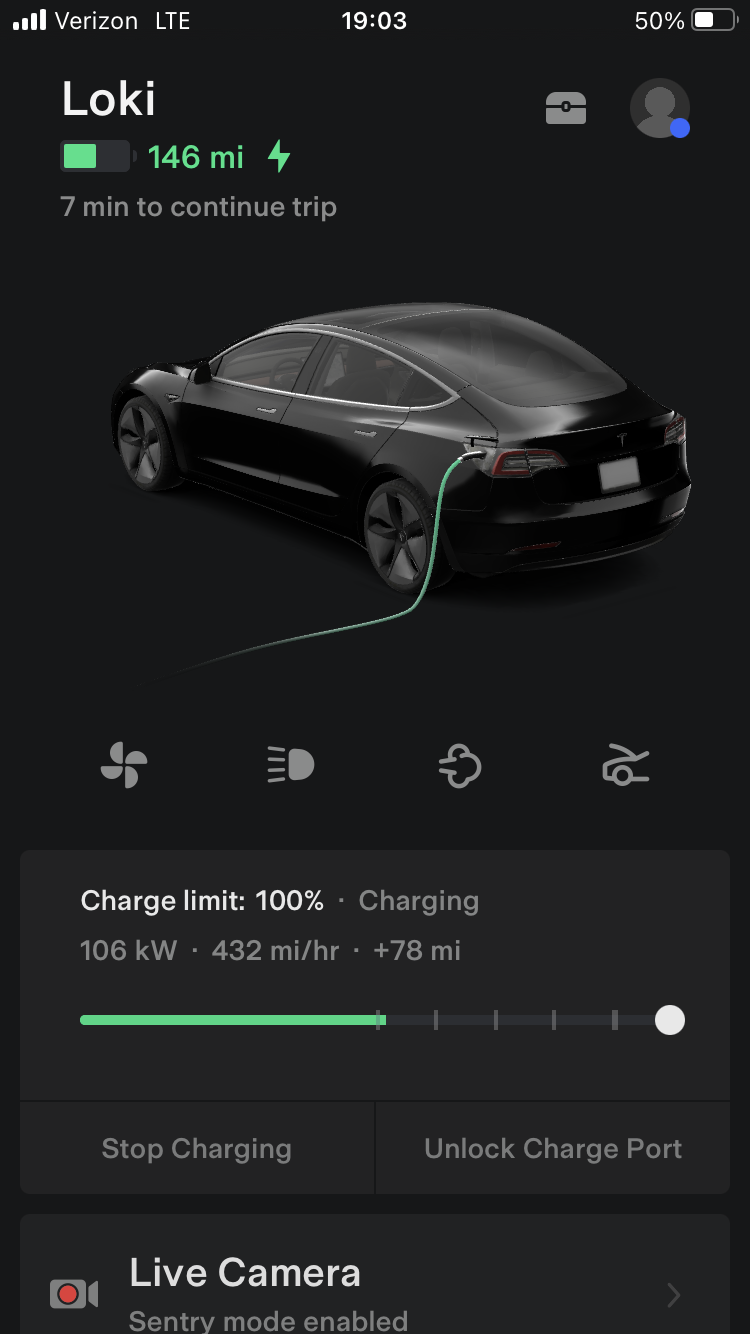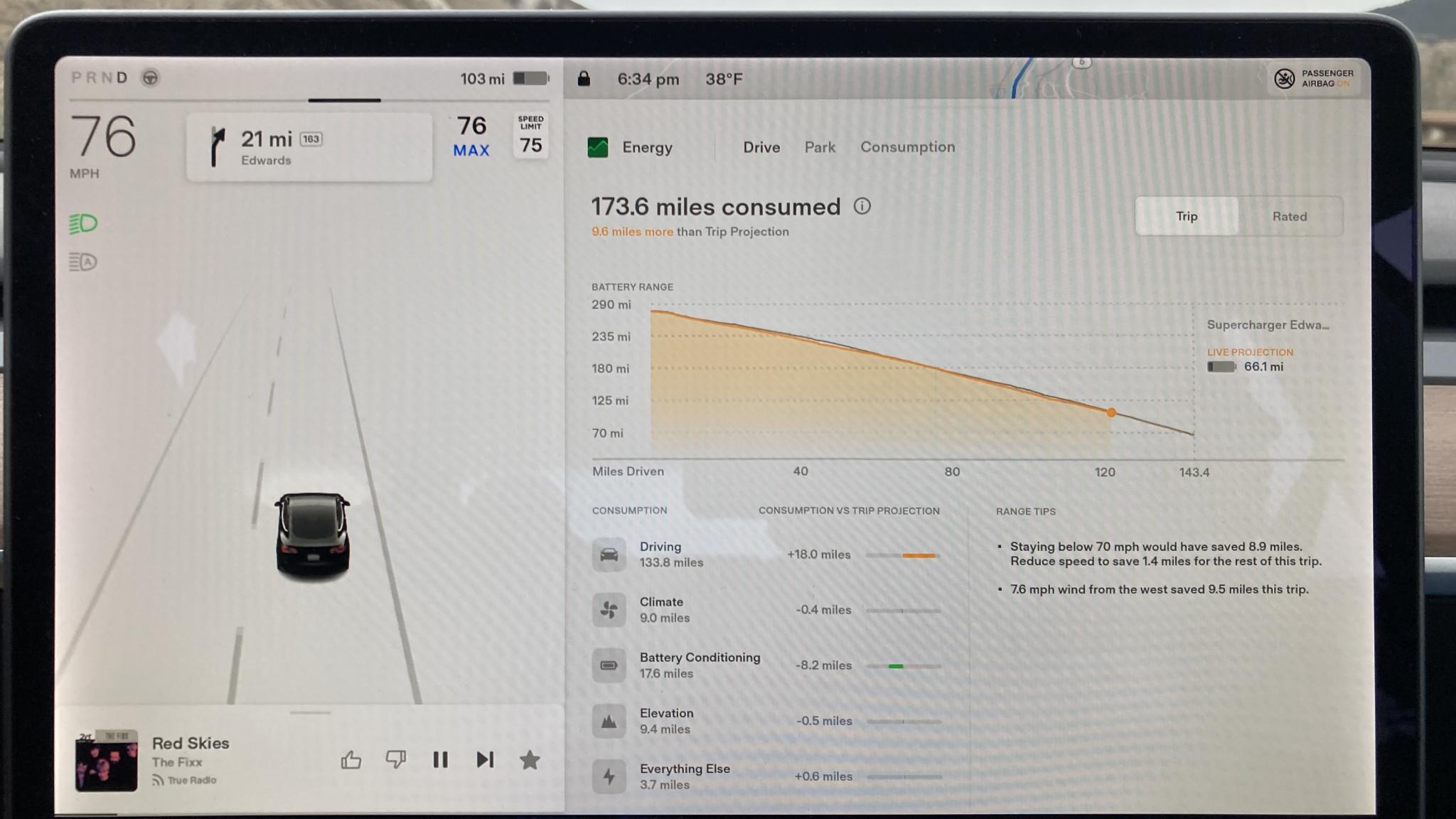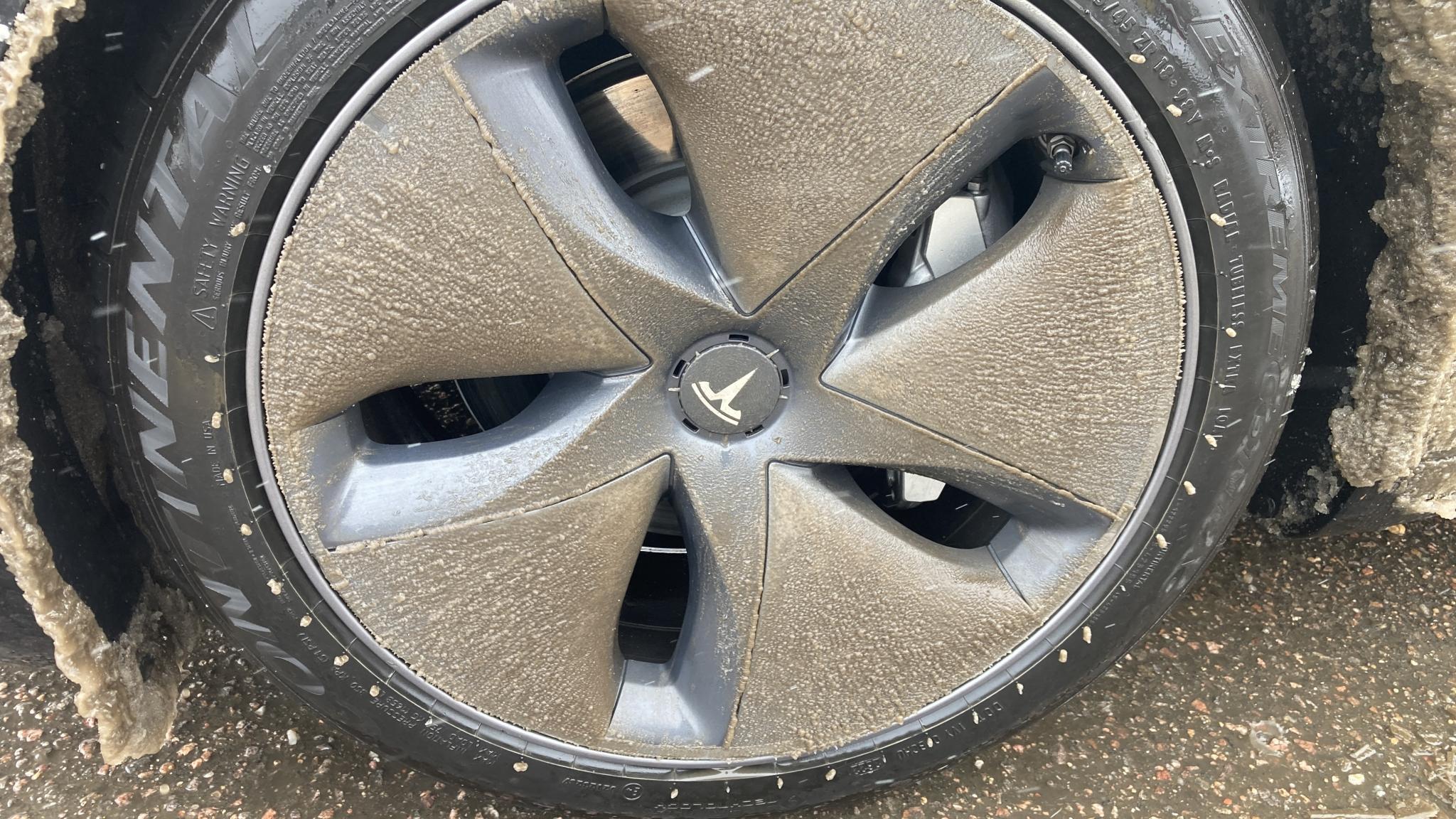Road trip! It's been a while since the Tesla hit the open road - our last couple of trips have involved other vehicles for various reasons. This won't be a blow by blow, but a couple of things were interesting.
First, we were in a serious winter storm going over. Bad enough that both the Eisenhower tunnel on I70 and the Leadville pass closed down, which effectively cuts Colorado in half. We ended up stranded in Keystone for the night. The car, however, handled it well. The traction/stability control is extremely good on this thing - it's got just a little lateral slip, enough to tell you that it's slippery under the tires, but not enough to get you in trouble. I am glad I learned about how the regen scales back in slippery conditions, and the one time I had to go for the friction brakes it was basically immediate ABS time. So, car was talking to me about the conditions but dealing with it. Unlike our Grand Cherokee, which deals pretty well but tells you absolutely nothing.
Like our last winter storm, we topped up the battery before going into the worst of it. I'd do that with a gas car too. That turned out unnecessary because the roads closed soon after so we basically just drove to a hotel. The next morning, we decided to grab breakfast in Idaho Springs and that meant we plugged in so we had a good buffer for generally running around Denver. On the way home on Sunday, we made a "charging only" (no food or other reasons to stop) stop which also included a bathroom break and a chance to watch some hockey playoffs. We actually stayed stopped for longer than necessary because of the hockey game :)
The car feels so much different with 100% charge because there's no regenerative braking. It makes it feel heavier, which is amusing to me. I know one of the advantages of the LFP battery chemisty is that you can run it to 100% all of the time, but I think I'd always want that extra unused capacity in day-to-day driving in order to allow for regen to work all the time.
For those who are wondering, here's what a charging stop looks like in the app. We had actually changed our minds about where we wanted to stop ("let's stop in Edwards because they have bathrooms there") so it was just a matter of adding the Edwards chargers to our trip. The car rejiggered everything else and decided the previously-scheduled stop in Glenwood Springs wouldn't be necessary. All very transparent, it just works. Interestingly, the change in charging stop didn't affect the charging time so it didn't matter where we stopped. We needed X kWh to get home and we left with Y, it didn't really matter when we added the difference.

Here's what the new energy screen looks like mid-trip. On the next leg, I was in the green (outperforming estimates) probably because it was sunnier so we weren't running the heater. we may have been sticking a little closer to the speed limit, too ;) It's pretty useful real-time feedback. Had we really sucked down the juice, the car would have rerouted us to an earlier charging stop.

Otherwise, just a car trip. Supercharging cost us $52 for a roughly 600 mile trip. Our hotel had a destination charger but due to our breakfast stop (and resulting high state of charge) on Saturday morning, we didn't really take much advantage of it. We also got home with a bunch of unused range because of that hockey game, so that means we bought a little power we didn't really use. CO gas is currently averaging $3.909/gal for mid-grade. So our trip cost us the same as driving a 46 mpg gas car with no real attempts at power management.
Cool aero on display in the freezing slush. I love the way slush lines visualize the pressure distribution and direction of airflow across a car. Naturally, the nose gets a lot of buildup but the upper 2/3 of the headlights are nice and clear. The tail, naturally, gets covered. The top of the rear fenders are nice and clean, though.



























